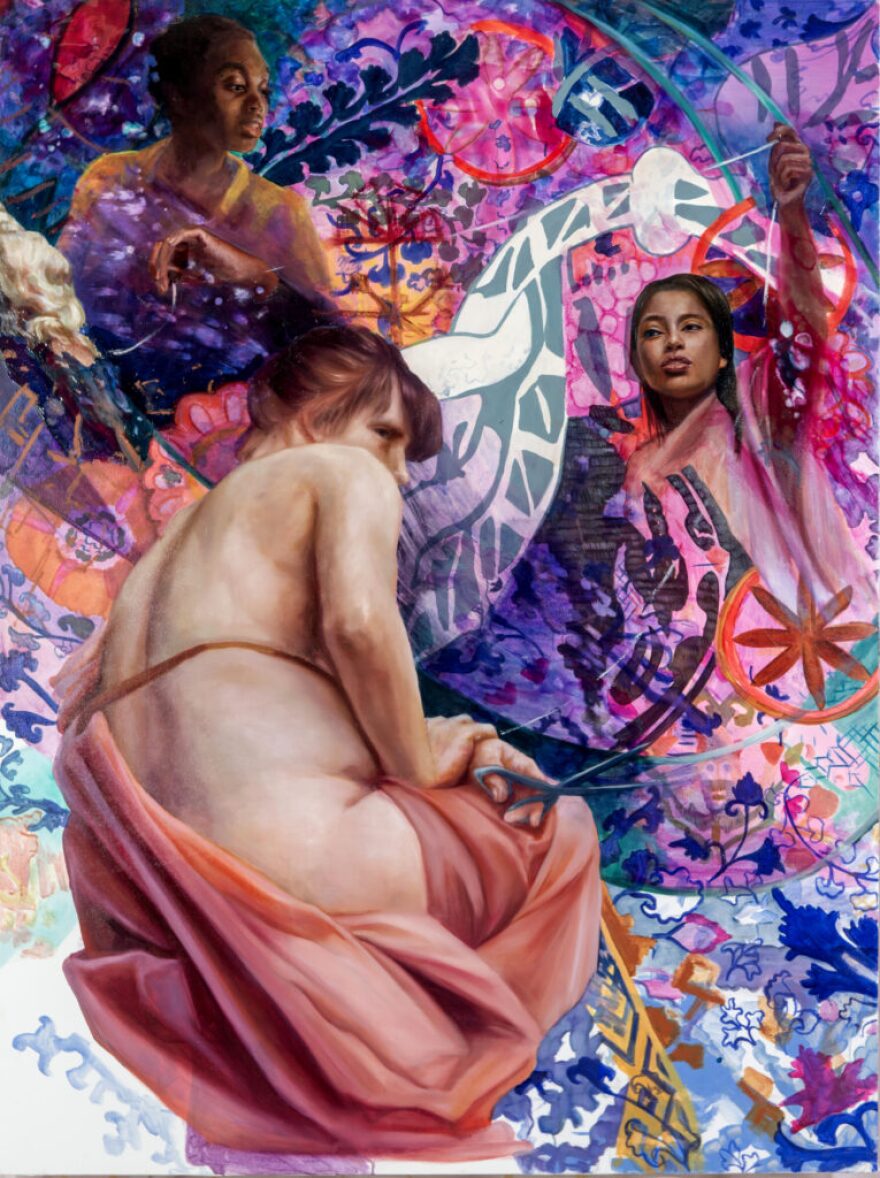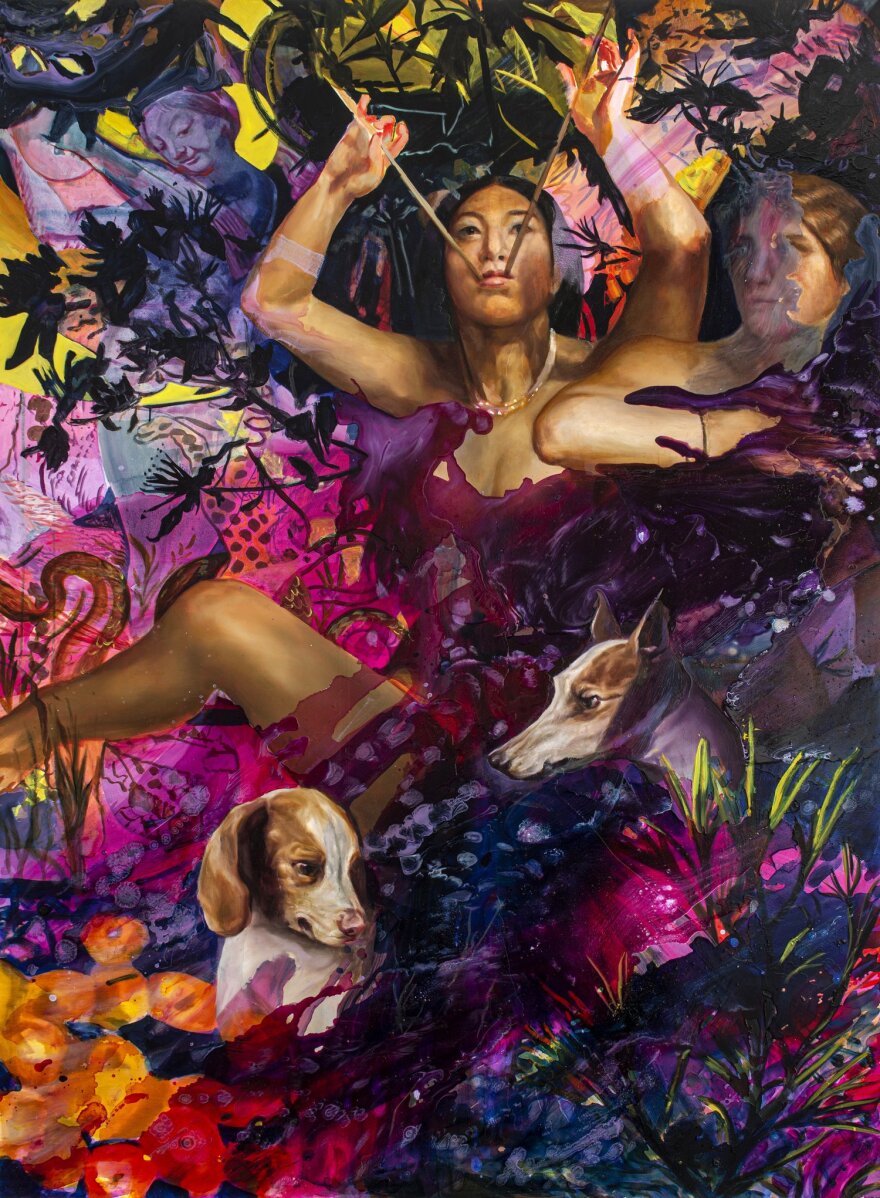ALLENTOWN, Pa. — Weaving, textiles and witchcraft are the inspiration for an artist's exhibition at the Allentown Art Museum.
Angela Fraleigh's "Threaded with Moonlight," which first debut in November, runs through April 21.
In celebration of the show, Fraleigh will participate in an artist talk with the museum's curator, Claire McRee, starting at 1 p.m. Saturday, March 23.

Joining her will be Moravian University's choir members, who are slated to perform at 12:30 p.m.
Access to archives
Fraleigh, an alumna of Yale University's School of Art and Boston University, was recruited by the museum to work on the project.
Her previous shows centered on female empowerment as a focus.
Most notably: "Splinters of a Secret Sky," at the Weatherspoon Art Museum in Greensboro, North Carolina; "Invisible Women, Vortic Art and Untitled Art," a virtual exhibition in Miami Beach, Florida; and "Sound the Deep Waters," held at the Delaware Art Museum in Wilmington, Delaware.
For the Allentown show, Fraleigh combined her fascination with the region's history in the silk industry with ongoing research she conducted on witchhunts, specifically during the Medieval era.
Fraleigh was granted access to the museum's extensive collection of textiles — around 8,000 pieces from all over the world.
In total, there are 13 pieces in the exhibition (13 being a number symbolic of rebirth in some traditions).
The works showcase women from all cultures and time periods, some dating back to the ancient Coptic period, around the 3rd and 4th centuries.
"In the collection, there are multiple examples of the ways in which women have woven patterns into the textiles for different purposes, but mostly for blessings, for protection. They were essentially what we would consider witchcraft, spellcraft — beautiful energies to be put into something," Fraleigh said of her pieces.

The power of three
Taking center stage are three large pieces with three female figures (another numerical nod), which contain patterns and textiles from the museum's collection.
"They're meant to allude to the states or the norms. Almost every kind of geographical culture across the globe has a version of this female before we [learn] about Christianity, Judaism," she said.
"Before that, obviously there were very different beliefs and religious structures. And so gods and goddesses were paramount. And a lot of them kind of go back to this kind of creation myth that puts women at the center of the creation of the universe, which I think is really interesting."
"I also just think it's amazing that even after all of the feminist movements that we've lived through as a culture. There's still this idea that women are not responsible for big important things."Artist Angela Fraleigh
As Fraleigh points out, there has been extensive research pointing to textile practitioners including women spinners, often accused of “weaving” spells through their work.
"Women weren't allowed to sing into their weavings, they're [weren't] allowed to recite incantations over their weavings, they were not allowed to summon goddesses and not allowed to be quiet either," Fraleigh said.
"We know that women, while weaving were kind of doing these things like it was just a folkloric tradition. It was a kind of pagan approach to inserting the thing that you're doing with the energy of love or joy or blessings."
The 'magic' of women
Fraleigh notes the creation of textile making served a base for mathematics, and computer coding — down to the way we communicate.
"As an invention, as a practice, it's fundamental to who we are as a people. And I also just think it's amazing that even after all of the feminist movements that we've lived through as a culture. There's still this idea that women are not responsible for big important things," she said.
"I would just argue that it's incorrect. It's just a misunderstanding and a miscalculation and mis-documentation of the way our culture has evolved and come to be. There's multiple kinds of scholarship and points coming out right now that suggest that women were revered as makers, creators, shamans, like magic. They often were kind of forerunners of spiritualist movements."
Admission is free, but pre-registration is required.
For more information, click here.


